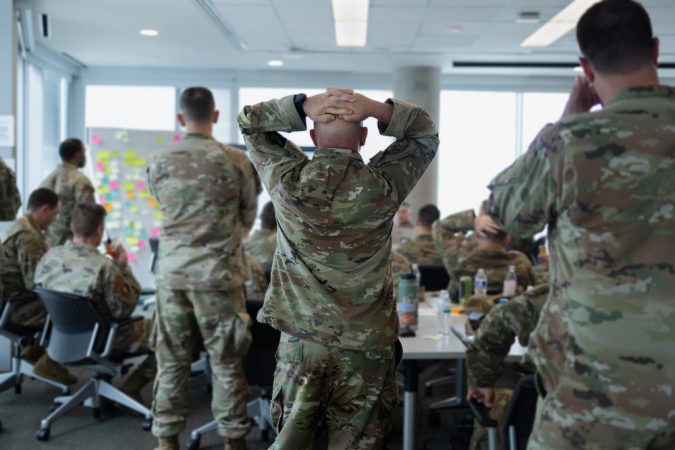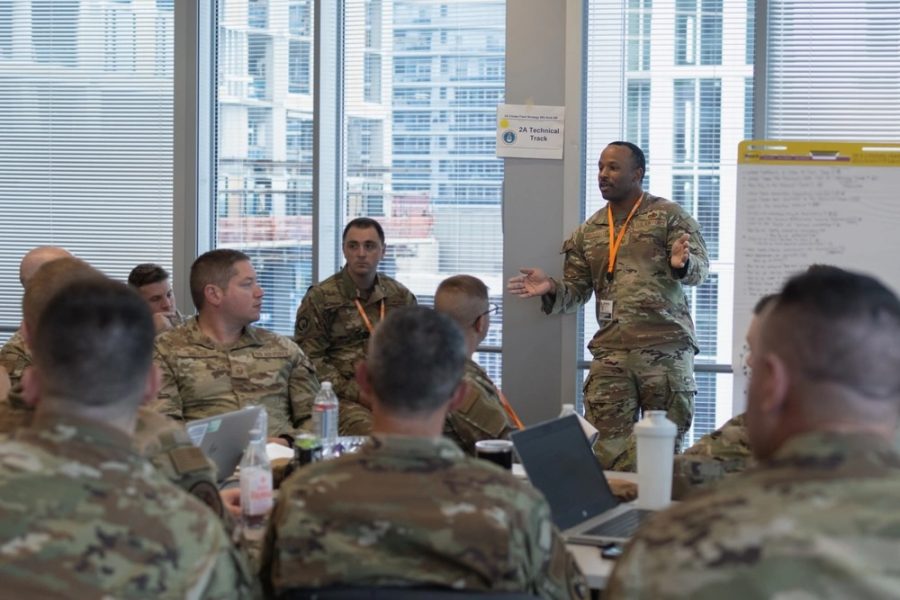The Air Force last month kicked off a feedback-gathering campaign about a plan to transform one of its largest and most important career fields: aircraft maintenance.
During the first week of August, about 100 maintainers gathered in northern Virginia for the first four of 10 working groups aimed at making sure the plan works for Airmen in 2A, the umbrella term for aircraft maintenance specialty codes. There are about 56,500 Airmen across the aircraft maintenance career fields, according to 2024 data.
“Tackling the challenges facing the 2A career fields is a monumental task,” Maj. Gen. Elizabeth Arledge, the Air Force director of logistics, said at the start of the event, according to a Sept. 4 press release.
“That is why your presence here is so invaluable,” she added. “Your input is the driving force behind this effort, and it is what will ensure our strategy is effective and responsive to the needs of our maintainers.”

The Plan
First revealed in January, the Air Force plans to condense its list of more than 50 aircraft maintenance job specialties down to seven, starting in 2027. Rather than starting in a specialty such as avionics, engines, or structural maintenance, junior enlisted Airmen would start in a single generalist track called the Aviation Maintenance Technician Track, where they would learn common tasks in launching and recovering aircraft.
Once maintainers reach the rank of Senior Airmen and are preparing to become noncommissioned officers, they would specialize in one of six areas:
- Avionics and Electrical, which combines avionics with the electrical side of the Environmental and Electrical (E&E) specialty.
- Aerospace Ground Equipment, which will look the same as it does now.
- Advanced Mechanical, which combines crew chiefs, fuels, hydraulics, and the flight line side of engine maintenance.
- Crew Support Systems, which combines ejection seat systems with the environmental side of E&E
- Fabrication, which combines aircraft structural maintenance, aircraft metals technology, and nondestructive inspection.
- Intermediate-level engines, for maintainers dedicated to intermediate-level engine maintenance.
Those specialties would not be tied to a particular type of aircraft in order to provide more flexibility in assignments and development, the Air Force said at the time.
Mid-career Airmen would stay in a specialized track through the rank of technical sergeant, at which point they could apply to become a “nose-to-tail cross-functional expert” on a given airframe, or stay in a specialist track until they reach master sergeant and can switch to more of a leadership role. Airmen can stay in the technical or leadership track through the rest of their careers, or they could switch between the two tracks.
Among current and former maintainers who spoke with Air & Space Forces Magazine, proponents of the new design said it could provide junior enlisted Airmen more hands-on time to master the fundamentals of aircraft maintenance, and more experienced Airmen the chance to stay close to the flight line throughout their careers.
However, critics said it could also dilute expertise across the career field and reduce local leaders’ ability to solve complex maintenance problems amid resource scarcity and a struggle to retain experienced hands.
Air Force officials believe the change will help prepare maintainers for working in small groups in isolated locations and keep pace with a rapidly changing portfolio of aircraft.
“The current system is built on legacy structures that limit talent management flexibility and interoperability,” said the press release from Headquarters Air Force. “Additionally, the Air Force faces challenges such as low first-term Airmen retention rates and the growing demands of aging aircraft that are only amplified by the current structure.”

Feedback
The aircraft maintenance career field managers at Air Force headquarters “recognized that the success of the 2A career field strategy depends on the support and approval of those most affected,” officials wrote in the release, “which is why maintainer input is crucial and placed at the forefront.”
About 1,000 Airmen volunteered for the first input-gathering event in August, with the 100 or so participants representing “various skillsets and experiences,” according to the release. They put on four working groups focusing on the 2A Technical Track, the Generalist Track, Manpower, and Workforce Management.
The release did not mention specific insights gathered from the working groups, but it said most respondents rated the event as “exceptional” in a survey afterwards.
Six more working groups remain, focusing on Field Engagement, Organizational Structure, Retention and Incentives, Specialist Track, Traditional SNCO Track, and Training Development. Air Force spokesperson Laurel Falls said the strategy team is currently recruiting for those working groups, which will primarily operate virtually but will likely feature an in-person kickoff event to be held in early 2026.
“Our future working groups, like our first four working groups, will select Airmen that strongly represent our 2A community, spanning all our MAJCOMs, components, rank tiers, and 2A AFSCs,” Falls said. “We are looking to get as much input as we can.”
Beyond the working groups, Falls said Air Force officials will send out a newsletter every quarter that seeks feedback from all aircraft maintainers, and there will also be base visits to gather direct input from Airmen.
The working group phase is expected to run through at least late spring 2026, Falls said. The Air Force is still working out when the first group of new Airmen will join the Aviation Maintenance Technician Track.


